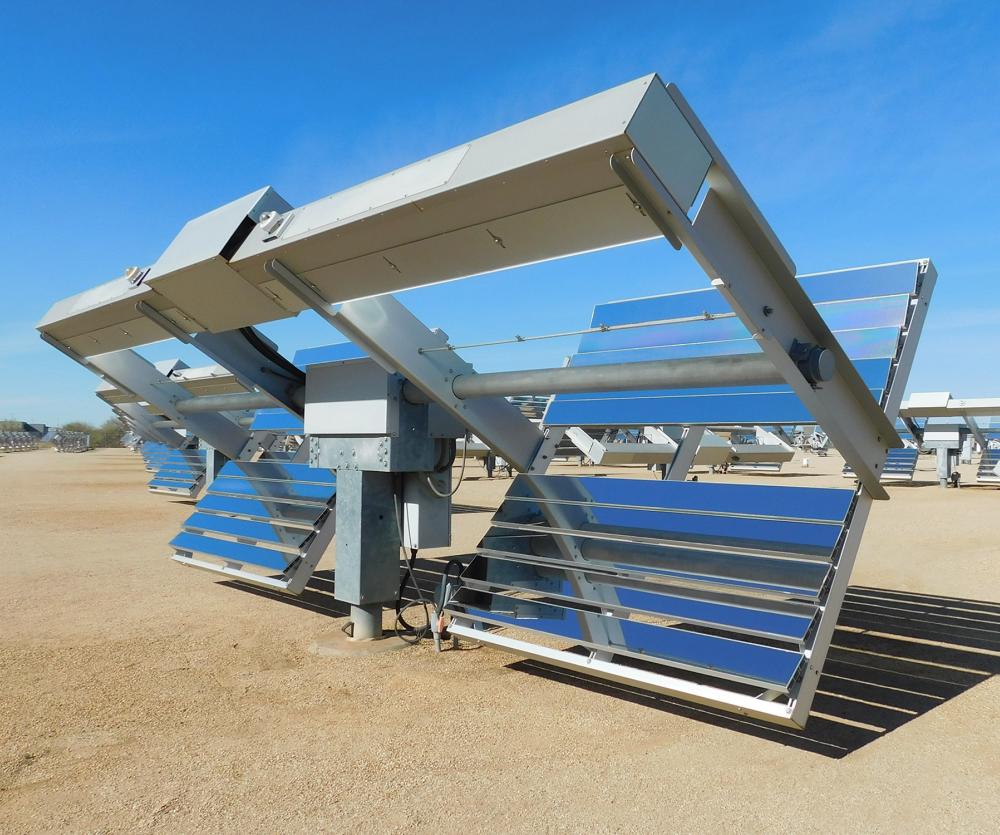
Fast-Track Your Plastic Testing with ISO 877-3
ISO 877-3 is an internationally recognized test method using concentrated sunlight on plastic applications. Similar to ASTM G90, the standard requires advanced Fresnel-reflecting solar concentrators to simulate years of natural weathering in a fraction of the time. The Q‑TRAC natural sunlight concentrators found at our Arizona site follow this standard to provide intense exposure to natural sunlight.
By intensifying real sunlight conditions, manufacturers can quickly evaluate how their plastic materials will perform over time, identifying potential durability issues and property changes before products reach the market. This helps businesses save both time and money while ensuring reliable, real-world performance data.
Test Parameters
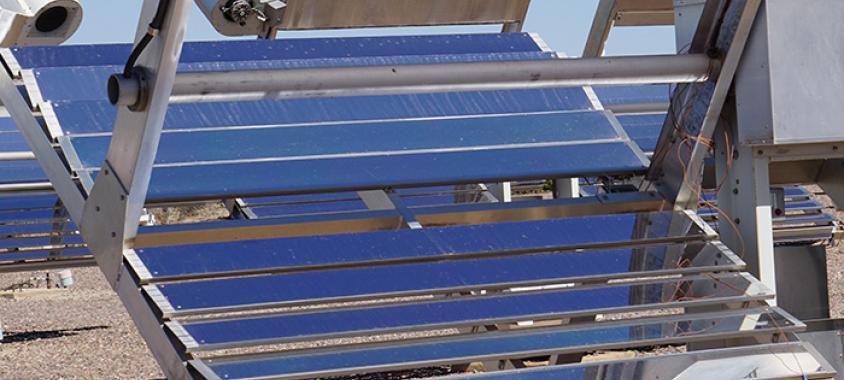
Exposure Apparatus
ISO 877-3 specifies a Q-TRAC natural sunlight concentrator, designed to concentrate outdoor sunlight uniformly on specimens.
- Concentrator : An array of flat mirrors (typically 10) is arranged to focus sunlight onto a fixed target area.
- Tracking system options:
- Single-axis: North-south orientation with manual seasonal altitude adjustments.
- Dual-axis: Controls azimuth and elevation to maximize solar exposure. Q-TRAC solar concentrators perform dual-axis tracking.
- Mirrors: Flat and highly-reflective in the UV and visible wavelength ranges, giving full-spectrum natural sunlight.
- Target area: Specimens are mounted on a board facing the mirrors, limiting the dimensions.
- Cooling system: A blower with an adjustable deflector, designed to direct air across specimen surfaces to prevent overheating. This can be controlled, limited, or uncontrolled.
- Spray system: Fan nozzles deliver a uniform mist of highly purified water to specimens, providing either thermal shock to simulate rainstorms during the day, or overnight surface wetness to simulate dew formation in the evening.
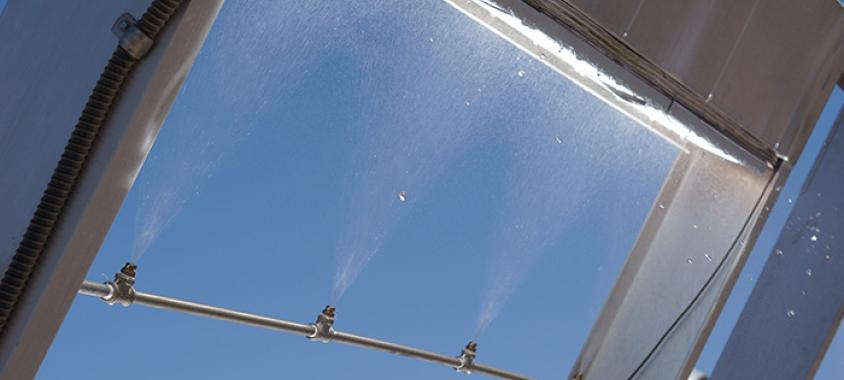
Moisture and Spray Cycles
Moisture exposure is critical for simulating environmental degradation in some materials. The practice outlines two typical water spray cycles, and can also be performed with no water spray:
Spray Cycles
Cycle | Daytime Spray | Nighttime Spray |
1 | 8 min spray, 52 min dry (1 cycle/hour) | 8 min spray at 9 PM, 12 AM, 3 AM |
2 | No spray | 3 min spray, 12 min dry from 7 PM to 5 AM |
3 | No spray | No spray |
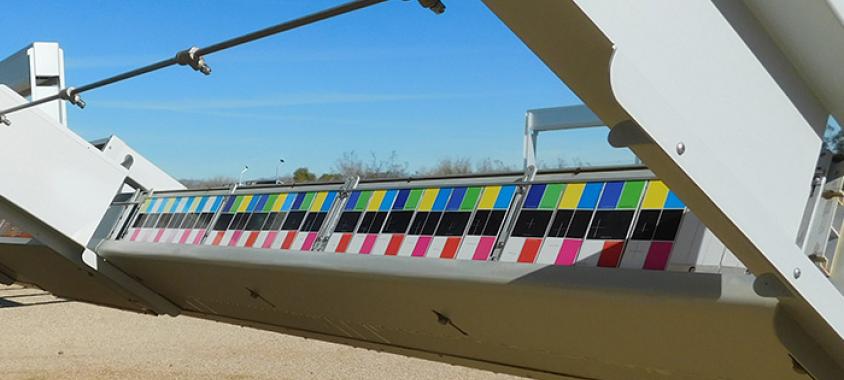
Temperature Control and Mounting
Without cooling, the high amount of solar energy that is being concentrated on specimens can result in high surface temperatures. Maintaining appropriate test temperatures can be handled in a variety of ways.
- Uncontrolled temperature: During the day, the Q-TRAC cooling system is running at maximum capacity. This provides seasonal variability, where summer and winter test temperatures fluctuate.
- Limited temperature: The Q-TRAC cooling system is running at maximum capacity but, if the surface temperatures exceed a certain value, mirrors will fall out of focus to prevent specimen overheating.
- Controlled temperature: A setpoint is chosen and the Q-TRAC cooling system varies to ensure the surface temperatures are maintained throughout the day. This provides a high degree of stability and repeatability, where summer and winter test temperatures remain the same.

Radiant Exposure Measurement
Q-TRAC testing is usually scheduled according to radiant dosage, not according to time on exposure. Testing is performed only under clear conditions. Guidelines are given for the irradiance in ISO 877-3:
- UV Exposure (295-385 nm): Use two calibrated radiometers - one shaded for diffuse-only (excluding 6° ±0.5° field); calculate direct beam as global minus diffuse.
- Total Solar Exposure (300-3000 nm): Measured with a Class C pyranometer or WMO First Class pyrheliometer in a 5-5.7° field.
- Clear Sky Definition: Diffuse ≤20% of total radiation.
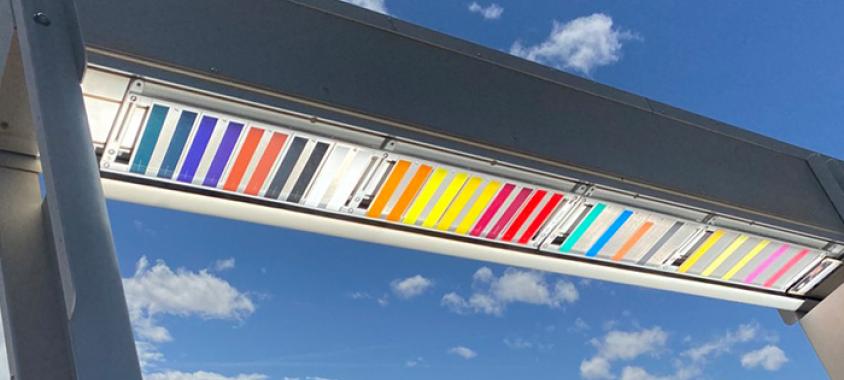
Specimen Parameters
Specimens must be prepared and mounted to ensure consistent exposure. Q-TRAC test costs are determined based on the space utilized, in linear inches, by the specimens.
- Size and Replicates: Length and width must fit target board; thickness recommended ≤13 mm and consistent for all specimens, for proper airflow. Replicates are encouraged.
- Mounting types:
- Non-insulated: 5-6 mm off board for best airflow.
- Insulated: Backed by 13 mm plywood.
- Clearance: 10-14 mm from air deflector to specimen surface is recommended - align edges to avoid airflow disruption.
- Controls: Include at least one (ideally two: good and poor durability) exposed simultaneously.
For under-glass tests, use specified glass and adjust cooling.
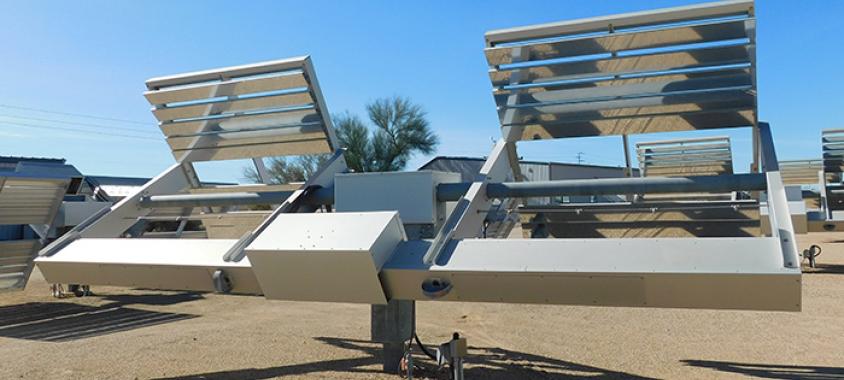
Operational and Maintenance Guidelines
- Test Duration/Endpoint: Can be based on preset UV/total exposure, control changes, or property change (such as gloss or color). Q-Lab recommends testing to failure.
- Maintenance:
- Clean mirrors routinely; measure UV reflectance every 6 months
- Ensure full target illumination; calibrate instruments annually; check UV radiometers
monthly.
- Safety: Use UV/IR-blocking eye protection, protective clothing, and blower screens.
- Evaluation: Compare against exposed control materials with known performance and use file specimens for visual evaluations.

Why Test to ISO 877-3
ISO 877-3 is essential for plastic manufacturers, helping predict real-world performance by simulating years of sun exposure in just weeks. This internationally recognized standard helps companies reduce development time, meet mandatory industry requirements, and compare material options using standardized conditions. By identifying potential issues like cracking, fading, or mechanical property loss before products reach market, ISO 877-3 testing supports quality assurance, ensures regulatory compliance, and provides the proven durability data needed to confidently market materials with a competitive advantage.
Pros and Cons of ISO 877-3
- Testing in real-world conditions
- By exposing test specimens to actual sunlight, moisture, and temperature fluctuations, ISO 877-3 provides realistic conditions.
- Concentrated sunlight
- ISO 877-3 exposes materials to extreme sunlight & heat using a series of 10 mirrors, for fast and accurate results.
- Cost-effective
- Natural outdoor testing can be a cost-effective way to understand your material's durability.
- Extreme temperatures
- Linear fresnel reflectors can create extremely high temperatures, leading to potentially exaggerated degradation and limiting the types of specimens suitable for Q-TRAC testing.
- Specimen sizing
- The geometry of natural solar concentrator testing according to ISO 877-3 prevents testing of large components or three-dimensional specimens.
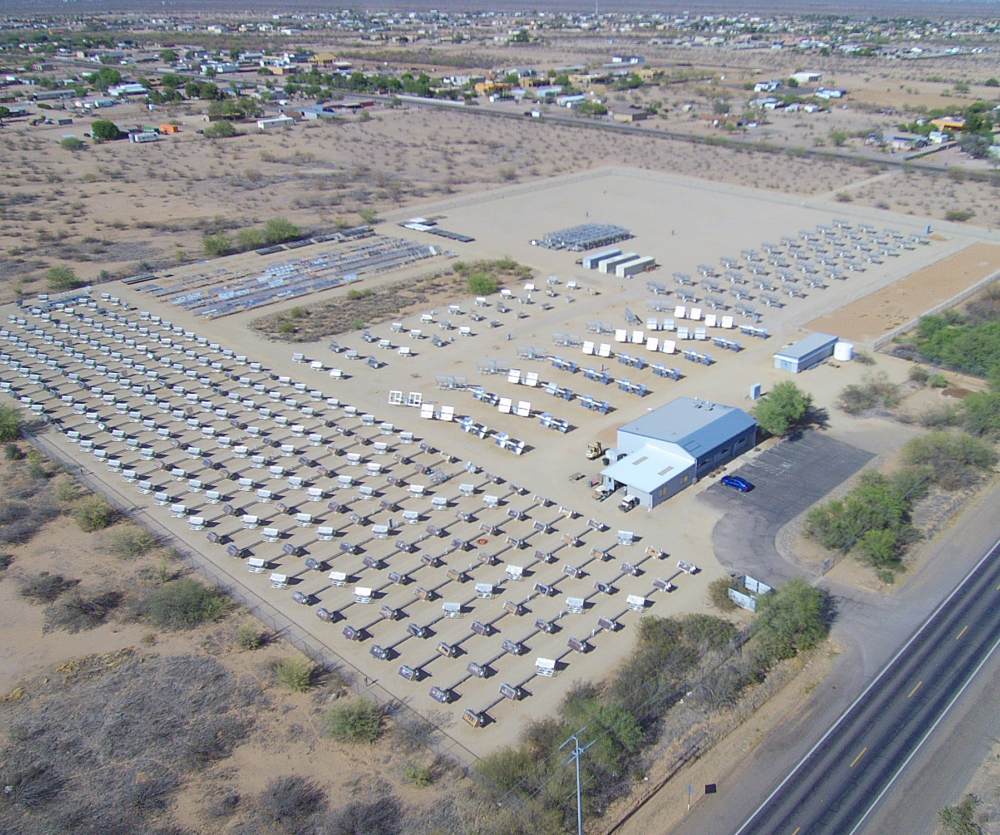
How Q-Lab Can Help
Q-Lab offers outdoor exposure testing programs at our internationally-recognized, ISO 17025-accredited benchmark locations in Florida and Arizona. Weathering exposures at these sites are not only realistic; they also could be considered a form of accelerated weathering testing (depending on where the product will be used outdoors) and are the best way to verify laboratory test results. Q-Lab also provides all users with climate data to enhance interpretation of data collected during outdoor exposures. See our Outdoor Testing brochure for more information on these sites and our Testing Services brochure to learn about our full range of weathering testing services.
Natural Outdoor Testing Resources
Standards
Review setup and performance information on key international and OEM test standards from ASTM, ISO, SAE, JIS, GB, and more.
Document Library
Browse Q-Lab’s extensive library of weathering testing literature and technical content.
Contact Q-Lab
For information on Q-Lab's testing services options, contact our team of experts today!